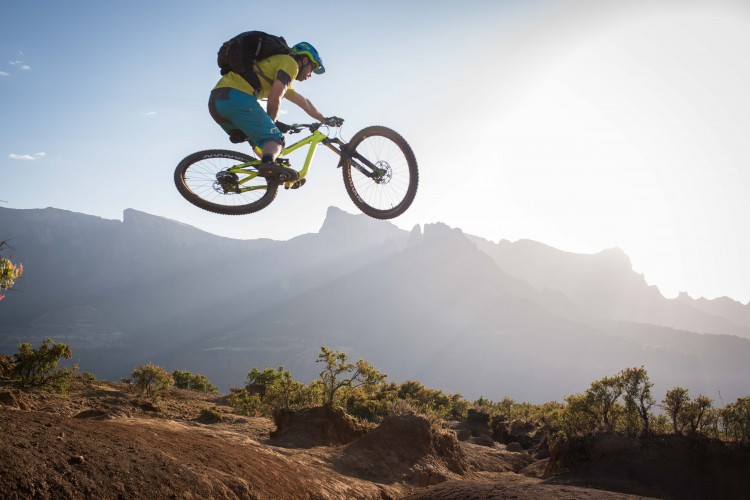
It seems like trail access is becoming a more prominent issue lately, particularly with regards to e-bikes. Post an article on the subject and watch the comments come flying in from both sides of the debate.
Related: Opinion: Electric Mountain Bikes Don’t Belong on Mountain Bike Trails
Related: Opinion: Electric Mountain Bikes Belong on Mountain Bike Trails
Marc Lindarets–namesake of the Lindarets component company–is firmly in the “against” camp, and is taking action. He has a very succinct argument: once you add a motor–any motor–to a bike, it becomes a motorbike. Rather than rehashing what he wrote, we’ll give it to you straight from the horse’s mouth:
The distinction between motorized and non-motorized recreation should be clear, but there are those within our own industry who seek to have motor-assist cycles defined as bicycles for the purposes of trail access.
And that’s scary.
Since the dawn of the sport, mountain bikers have worked hard against the idea that what has proved to be a low-impact, non-consumptive activity should be placed in the same category as motorized travel. As a result of those efforts, cyclists now have access to some of the most beautiful and secluded trails in the world–to say nothing of the countless urban and suburban trail networks that do not allow motorized travel. Still, in many places trail access remains tenuous.
As currently regulated, electric assists can provide 275% beyond their rider’s power, at speeds up to 20mph. While essentially quadrupling a rider’s output and climbing speed is worrisome in itself, given the electronics and mountain bike communities’ propensity for tinkering and the fast pace of battery evolution there is little reason to think that regulatory limits will stand. After all, what portion of motorcycles in service have their factory noise and emissions controls in place?
The e-bike industry is quick to paint those who don’t embrace their product as emotional and exclusionary, ageist and elitist. They shed crocodile tears for those who—for reasons of age, illness, or lack of time—cannot currently participate in the sport. Yet their marketing of long-travel mini-motos hardly targets the aged and infirm, belying their altrusim.
Once a motor—gasoline, electric, or other—has been added to a bicycle, a line has been crossed. Given the challenges in obtaining and maintaining trail access for the many, it is our belief that motorized bicycles should be restricted to the tens of thousands of trails currently open to motorized use. The risk to the public’s perception of our sport is simply too great and claiming that a motorized bicycle is ‘only’ this or ‘just’ that (anything other than motorized) is not only disingenuous, it is short-sighted and dangerous.
So please: Contact IMBA in support of their Motorized/Nonmotorized Recreation Policy Statement. Engage your local land managers. Do anything but sit idly by while others attempt to redefine the sport and the places that we love.
And if you’d like, please consider wearing a Motorbike Tee. Lindarets pledges to donate 100% of proceeds from Motorbike Tee sales to IMBA in support of their position distinguishing e-bikes from mountain bikes and to the Sustainable Trails Coalition for their efforts to improve human-powered backcountry access.




















